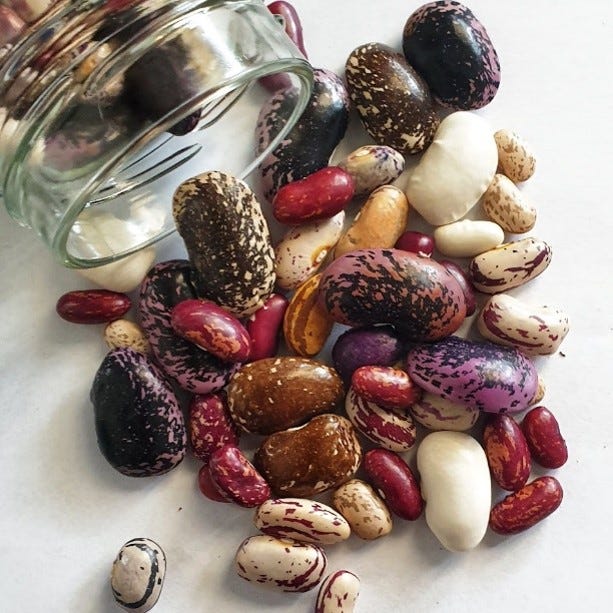Growing Beans
One of the oldest and most reliable vegetables to grow in your garden, whether green or dried, bush or pole, yardlong or hyacinth.
Along with tomatoes and lettuce, genetic diversity among beans is incredibly high. It is perhaps the most-bartered seed over the garden fence and many organizations across the world focus on maintaining the countless varieties that have been maintained by home gardeners, peasants, and farmers over the centuries. An online bean atlas is available in German with over 3,000 varieties and counting. The site also coordinates seedsavers who are maintaining the genetic diversity in Europe. View it with a translator in your browser: https://www.bohnen-atlas.de/startseite

Green beans, which can be steamed, roasted, boiled, frozen, canned, or pickled, are the immature fruits of countless varieties of the common or garden bean (Phaseolus vulgaris), but the young pods of other species can also be used as green beans. The (scarlet) runner bean (Phaseolus coccineus), originally from South America, is an excellent multi-purpose species that is also prolific and decorative with its red flowers.
The yardlong or asparagus bean (Vigna unguiculata subsp. sesquipedalis) from Asia - actually a cowpea - and the hyacinth or lablab bean (Lablab purpureus) thrive in the tropics, but they can be grown in sufficiently mild climates and used as green beans. While the yardlong bean is also enjoyed raw in Asia, the common and runner beans should always be cooked to destroy natural toxins and improve digestibility. Yardlong beans are the only bean variety I have grown or planted as a transplant. Generally, like peas, beans prefer to be sown directly in the ground, and it saves a great deal of work.
Lima beans (Phaseolus lunatus), which also originated in South America, are grown for the seeds, whether fresh or dried as a dry bean. Also known as “butter bean,” the lima bean requires a warm climate with a relatively long growing season. I have yet to successfully grow them. Shorter season gardens should only choose bush varieties; climbers require long-season locations with hot summers.
With the opposite needs to lima beans, fava or broad beans (Vicia faba) are the one type of bean that is frost hardy. In mild climates such as in England or in my region, they can be sown in late fall and overwintered, much like peas. They are a valuable food crop for livestock and, as all legumes, can store nitrogen in their roots, thanks to a symbiotic relationship with specific bacteria. As such, they are also a good cover crop.
Beans are relatively easy to grow and nutritious. Dried beans provide protein and require only dry storage. In southern Burgenland, where I live, the local cuisine still celebrates dried beans, although locals are not in full agreement regarding which variety is the right one for the traditional “Bohnensterz” (bean porridge, a simple dish made of beans, flour, and schmalz). Each family has its own recipe using a dried bean they grew in their own garden. As I have discovered, the “real” Burgenland bean varies from smaller brown beans to large, kidney-shaped purple beans with black speckles. No one knows what they are called.
Keep reading with a 7-day free trial
Subscribe to Sow, Harvest, Savor: Tanja's Garden to keep reading this post and get 7 days of free access to the full post archives.



